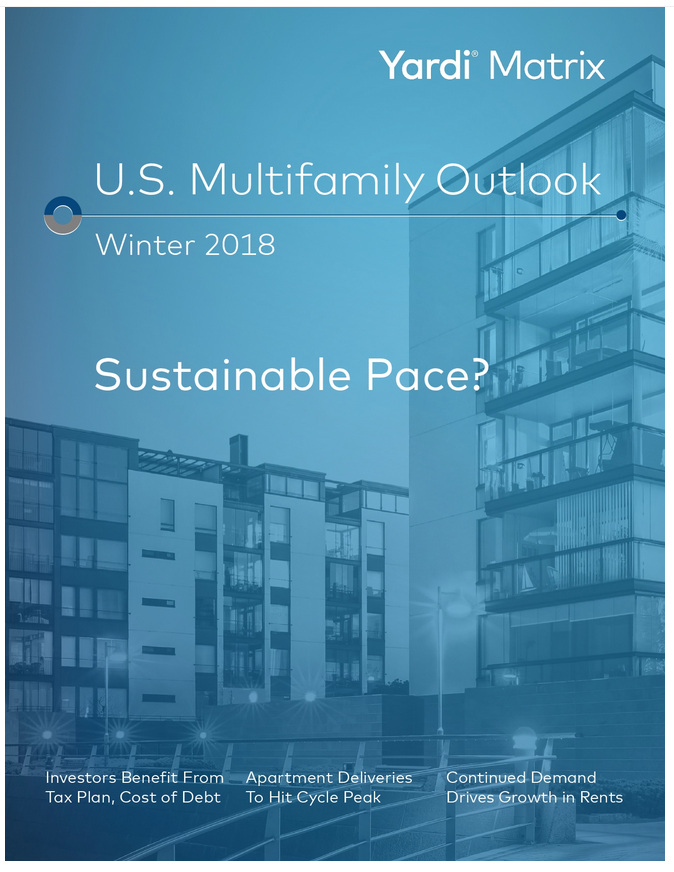What does a largely stagnant year for the multifamily industry in 2017 imply for this year? How will economic, tax policy, demographic, capital market and supply factors impact the segment? These and other issues comprise the content of “Sustainable Pace?”, a new market analysis compiled by Yardi Matrix. The Yardi Matrix research team’s study suggests that there’s enough steam left in the sector’s bull run to make multifamily a solid, dependable real estate market segment over the next 18 to 24 months for property owners, residents and investors. Rent growth cooled in 2017 amid robust development and occupancy levels began to trend down in some metros. On the upside, demand for multifamily shows no signs of slowing in 2018, as the renter cohort ages 20-34 keep growing while retirees continue to downsize. Urbanization and other social trends will also conspire to keep rental demand steady. Economy: Bright Prospects With regard to the national economy, “we expect another year of moderate economic growth, which potential upside from the recently passed tax reform bill that will lower tax rates and encourage corporate investment,” the report says, adding, “Job growth could slow as the labor market nears full employment, but should remain healthy.” A 17-year high in consumer confidence plus healthy housing, automobile, manufacturing and other segments are additional positive indicators. Rent Growth: Modest but Steady Following multifamily’s significant deceleration in 2017, the report forecasts rent growth in the 2.5% range nationally this year, with increases in supply and lack of affordability in high-cost metros checking growth. “Supply is the biggest headwind,” the report says, forecasting apartment deliveries in 2018 to increase by 20% to 360,000. This new supply will outstrip demand and prompt a slow slide in the occupancy rate. Sacramento, Calif., is the projected leader...

